Reaction Engines has announced a significant advancement in hypersonic propulsion technology, achieving a major milestone in the development of its propulsion system designed for high-Mach air vehicles, according to a press release from the company.
The breakthrough was made during ground-based testing, where the company successfully integrated its precooler technology with existing jet-engine architecture, demonstrating sustained Mach 3.5 operating conditions.
The testing involved coupling Reaction Engines’ precooler with a modified Rolls-Royce jet engine, simulating a propulsion system intended for an unpiloted, reusable high-Mach air vehicle.
Initially, the system achieved sustained Mach 2.3 operating conditions, which exceeds the maximum operating speed of the Concorde. The test then progressed to Mach 3.5, matching the airspeed record of the SR-71, the fastest air-breathing aircraft ever built.
In addition to the precooler technology, Reaction Engines is working on developing and testing new intake designs and technologies aimed at hypersonic capabilities. The company is currently manufacturing and assembling hardware for a full-scale ground-based high-Mach thermomechanical test, while sub-scale aerodynamic wind-tunnel testing is ongoing to evaluate intake performance under various supersonic conditions.
“As the world’s most advanced heat exchanger technology company, this significant milestone is a testament to our relentless efforts to develop novel, innovative, reusable and affordable propulsion systems for hypersonic air vehicles at pace,” said Mark Thomas, Chief Executive of Reaction Engines, in the press release.
“This capability is transferrable to thermal management solutions for multiple applications and mission profiles.”
While this advancement is a critical step forward in Reaction Engines’ pursuit of hypersonic flight, the technology is still in the testing phase. The focus remains on the broader potential applications of the propulsion system in high-Mach air vehicles.




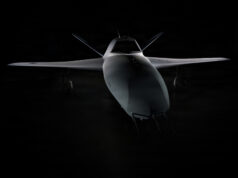

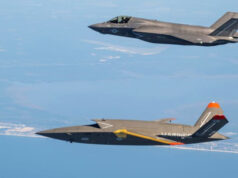
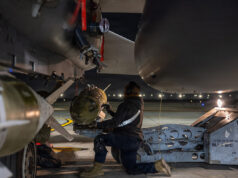
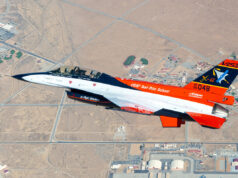

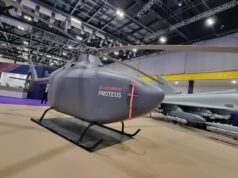
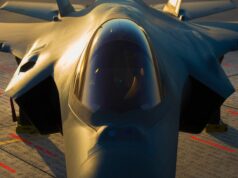

This is not an announcement of anything new, Reaction Engines had this on their website years ago. I assume keeping it quiet was then decided to be prudent. To my mind this (cooler ) technology should have been applied to both our F-35 and our Typhoon aircraft long ago, maybe it was ^.^
Why? an aircraft at M3.5 to turn back if it is in Mediterranean will end up in the Baltic, the turn radius is measured in hundreds of km’s
M3.5 do not make sense unless something new is added to it. If you want to get an extra range in your AAM’s by firing them at M3.5 it makes more sense to improve the AAM’s often.
The point is more that you can use conventional air breathing jets to go up to Mach 3.5…..equally you can power down and go slower.
So your plane takes off and vectors to tasking at Mach 3.5.
Could even be used for jet powering cruise missiles…..?
Yup I think someone gets the potential. I certainly suspect any vehicle travelling at 3.5 and above is doing so for a good reason mostly one presumes to reduce interception chances by the enemy in whatever function any given vehicle is designed for. Hypersonic (or near) is the obvious first adoptee of such an engine as it will give it low to ultra high speed in a single package whereas at present such a vehicle needs to be air launched at speed if ram/scramjet powered or have a booster to propel it to a sped such an engine can operate. Missiles too surface launched would gain from it but one presumes rather costly as a single use option. But the potential and flexibility is certainly substantial in all manner of proposals I suspect.
I think is now 10 years ago when reaction did the feasibility study with their early prototype pre-cooler and I think a donated RR Avon. Which not only proved that the pre-cooler worked as desired. But also proved how it would significantly improve the performance of the RR Avon. Since then the pre-cooler has shrunken in size and weight. Where the capillary cooling tubes are now thinner and smaller in diameter.
The previous HVX tests proved the latest pre-cooler could take a Mach 5 airflow at over 1000C and in 1/20 of a second cooler it to below 5C.This test proves that a turbojet with a pre-cooler can produce enough thrust to reach Mach 3.5.
My question though is what turbojet are they using?
I have absolutely no idea what jet they are using.
If I was to take a running guess it might be out of a Tornado…..just thinking what there are a lot of around? Unlikely to be an Olympus (aero) as there were not a lot of runners left….the overhauled BA ones went to the Vulcan project.
I (speculating even more) it is determined by the bypass ratio. So it would have to be something quite recent and quite military.
So this could (speculating wildly now) even be the new RR core.
I’ll stop speculating there!
The word Gnome (or was it Goblin?) was mentioned somewhere on RE’s own press release, so the jet itself might have been truly ancient.
No fighter uses its max speed to dogfight, fire your beyond visual range missiles and get the hell out. Mach 3.6 (PLUS) sounds good to me! ^.^
Agreed speed when you need it will be a great advantage even in short bursts. New technology engines will be better able to offer it more economically too. I guess how it works with stealth technology is the next question though the coatings are more durable compared to the F22 these days and hopefully even more so in the future.
That simply isn’t representative of the facts or the likely use profile of such an engine. Indeed they aren’t talking of a manned vehicle at this stage at all and as however hypersonic manned/unmanned vehicles exist or are under development one presumes they fully take into consideration potential turning circles of said aircraft/vehicles unless you think them merely stupid compared to yourself.
On their original time line I should be able to fly the skylon space plane to Sydney for my holidays this year.
I can’t see this being used on a military aircraft or anything else for a long time as the boats already sailed for the next generation of engines for NGAD and Tempest.
No doubt this will be used on the HVX concept.
Here’s hoping.
The main application of Reaction Engines’ technology isn’t actually SABRE.
The cooling arrays they invented in order to allow air to function like cryogenic oxidiser in a fraction of a second is very, very useful beyond the original Skylon project, which is now only part of what they offer.
Cooling the compressor stage of jet engines increases their power and maximum speed anyway without the expensive ramjet.
I would be very surprised if this technology didn’t go (given that they cooperate with RR for a lot of this stuff) into allowing Tempest’s engines to produce more power out of a smaller diameter, increasing the room available for weapons and sensors internally.
Yes I get all that, it’s just they were saying all the same things 10 years ago and they are still just conducting static tests.
They only completed the pre cooler tests a few years back, before that it was building a reliable physical design of their concept. That was a highly complex business considering what was being asked of the technology. The timeline has been relatively on track this past 5 years. The talk ten years ago was to get the backing and finance to mature this technology, they finally got that from Bae, RR the Govt and Boeing amongst others and the latter provided the supersonic ground facilities to finally do that ground testing. Not sure what more you can expect considering Bond pretty much got this whole thing off the ground and sustained it single handed the past 20 years with little finance.
From my understanding, they have run out of Government funding. Which is why the news of late has been rather slow to be released.
Exactly as I keep repeating to brick walls this technology can be adapted to standard jet turbine engines, that was always the initial intention. Sabre is for the longer term future but single stage to space ie LEO is still a borderline capability though edge of space is more achievable if purpose for that is there. So adding it to traditional aero engines is why a RR engine has been able to be adapted to 3.5 Mach specs in a relatively short time.
But that’s the point it’s adaptable to present and future gen engines, since when has RR built a 3.5mach engine. There’s no reason to think RR are not designing the Tempest engines with the pre-cooler technology in mind that aspect is very doable just as in the US they are producing a hypersonic engine using an adapted standard fighter engine as its core, a far more complex design by the way. The pre cooler tech is already being used in various ground based systems and with ten years to have in service engines available I would guarantee this technology will to degree or another be incorporated in next gen engines as long as it proves completely reliable. Sabre style engines are still a long way off however and of course need a ‘space plane’ or high altitude vehicle to make them worth while.
Skylon was a concept to get traction it was never a concrete design just a proposal to inspire potential use of a fully fledged Sabre style engine and obtain research funding for that, a refined version of the original Hotol.
And if they were given billions in funding instead of a few million may be they would have.
Reaction Engine pre cooker tech is being integrated into tempest engine. RE is part of the tempest team. Apparently it being used to make the engine more efficient and generate electricity. But if we suddenly see tempest feel the need for speed I wouldn’t be surprised if was saw 3. Something on the Speedo
Haha Pre cooker
Imagine, a device intended to heat up the compressor blades.
We could sell them to China.
Considering speed equals friction, friction equals heat and even a stealth jet will be a flashing neon sign to an infra red detection system.
Mach 3.5 might sound good on paper but tactically , for a jet whose trump card is ultra low observability. Seems to be a bit illogical.
It a intercept aircraft for the most part, not a bomber. So it being able go faster it formally accepted would be an advantage of for interception capability.
Given the distances the Japanese are looking at. I can see the logic of a sprint to get to the general area. Then slow down and sneak the rest of the way
The development has been ongoing for years. However there are a series of static tests planned. It will be one of them
I think you may have misunderstood what has happened. They announced successful high speed sustained trials of the pre cooler technology a few years back (end of 22 perhaps). Having completed those altitude representative trials they then said with that milestone completed the next step was to combine the pre cooler with a combustion section to form a representative engine testbed. This is what they have now done within the expected timescale (a little overdue at worst). So this is the first time that a representative high Mach engine has run on a testbed, it was always the plan to apply the technology first to traditional aer engines before any attempt to produce the innovative Sabre engine which is a hybrid turbine/rocket engine. In the immediate future turbine engines are clearly the major aero beneficiary of the pre cooler technology as it allows for higher speeds with reduced thermal degradation while allowing them to operate more efficiently at higher altitudes by increasing atmospheric throughput airflow. Clearly this is why they have been able to run a representative trial of a Mach 3.5 engine using what appears to be modified existing power units which is enormously promising especially as this bridges the gap between turbine engine efficiency and Ram/Scramjet efficiency.
This will thus open up more efficient and compact routes to hypersonic hybrid engines while in the meantime offering a considerable potential boast in power to more traditional power plants of the sort that will power Tempest. So this is indeed new and big news with potentially significant and numerous future developments.
Maybe, my question would be: what’s the fuel consumption like and is it needed for F35 and Typhoons? In fact the F4 Phantom from 1960 is faster than the F35. Seems to indicate that other factors are more important for ariel weapons platforms these days
It will massively improve fuel consumption at cruise as well as massively increase the range of flying speed.
They use the jet engine to simulate high speed air flow not to actually fly. The precooler is for use with the SABRE engine and that is for hypersonic applications. What they are saying is that they have now proven the pre-cooler works at speed of up to Mach 3.5.
It is worth checking out their website for further information because it has the potential to be world altering.
I believe they are looking to get to at least Mach 5. i.e. London to New York in an hour. London to Australia in under 6 hours.
The precooler is NOT just for use with SABRE, can you actually read??
It is. It was the whole reason they developed the technology.
I just hope that one day it happens for REL.
Is this technology destined for use in space?
Well as part of Sabre potentially yes but really don’t see that being realised if at all for years as the US is going its own way for hypersonic engines presently though Boeing is backing Reaction Engines. But hey who trusts Boeing in Space or indeed anywhere presently. But again the pre-cooler technology mat we’ll get incorporated in other designs and Airbus hax put money in too.
Thank you SITS.
Good to see. I’d love for the politicians to make a big investment in this technology for both military and civil applications… unfortunately I can’t see it happen.
I would to see the private sector make a big investment and turn it into something useful rather than a government project that just eats up money and provides little benefit.
I agree it needs aerospace companies to exploit it in vIable projects the Govt has backed it but industry needs to commit but the pre cooler technology is already being used in all manner of projects so is already at early stage success. How far it gets into aerospace is the only question, but I suspect it will become widely used though there maybe competitive solutions a US hypersonic project have successfully developed and tested a pre cooler too as announced recently.
Well philosophically I agree with that point in general, across all areas of government spending, however something like this with military applications which can keep us ahead of certain other countries clearly merits government investment. That’s how we got jet engines in the first place….
Indeed, though thanks to the Govt appointed expert assessor ie Griffith (ironically the father of the gas turbine concept himself) Whittle was not backed at a vital time pre war which not only lost us our lead but very nearly drove Whittle out of the whole technology, indeed did less than a decade later. Ironically.
Griffith was convinced that the pure gas turbine would never produce enough thrust and championed the turboprop in its place. Gave us some decent turboprops post war I guess.
Just to clarify, the reason Concorde was limited to 2.2Mach was that the wing leading edge was aluminium and anything over 2.2Mach it got too hot and risked deforming. Basically, it started to melt..! Planes don’t fly too well with a melting leading edge.
Also, after the fuel crisis they flew the Concorde at Mach 2 which saved quite a bit of fuel and also reduced the thermal stress on the airframe I believe.
Still the most beautiful aircraft ever designed IMO and it’s withdrawal without replacement is arguably the biggest technological step backwards yet…
Cheers CR
Will this technology be used on Tempest?
Embarrassingly it looks like the MOD’s hypersonic programme will be cancelled. Defence cuts are again the order of the day and redundancies are already being made by the likes of Reaction Engines. The core UK Defence Budget (currently 1.9% of GDP excluding pensions and aid to Ukraine) seems almost certain to decrease over the next few years in order to fund the 20% pay rises for GPs, train drivers, etc. There seems no possibility of defence spending hitting 2.5% under the new Labour government, even if a Russian/Chinese armada anchored in the Thames.
Isn’t there a new engine coming for the F35 that has a variable thrust ability? I know it’s for a lot slower speeds, up to Mach 1.6+(?) but is the tech in this the same or different? And if the F35 went any faster would it’s radar absorbing paint peel off? Does the Typhoon have any special paint to help with improving its stealth?